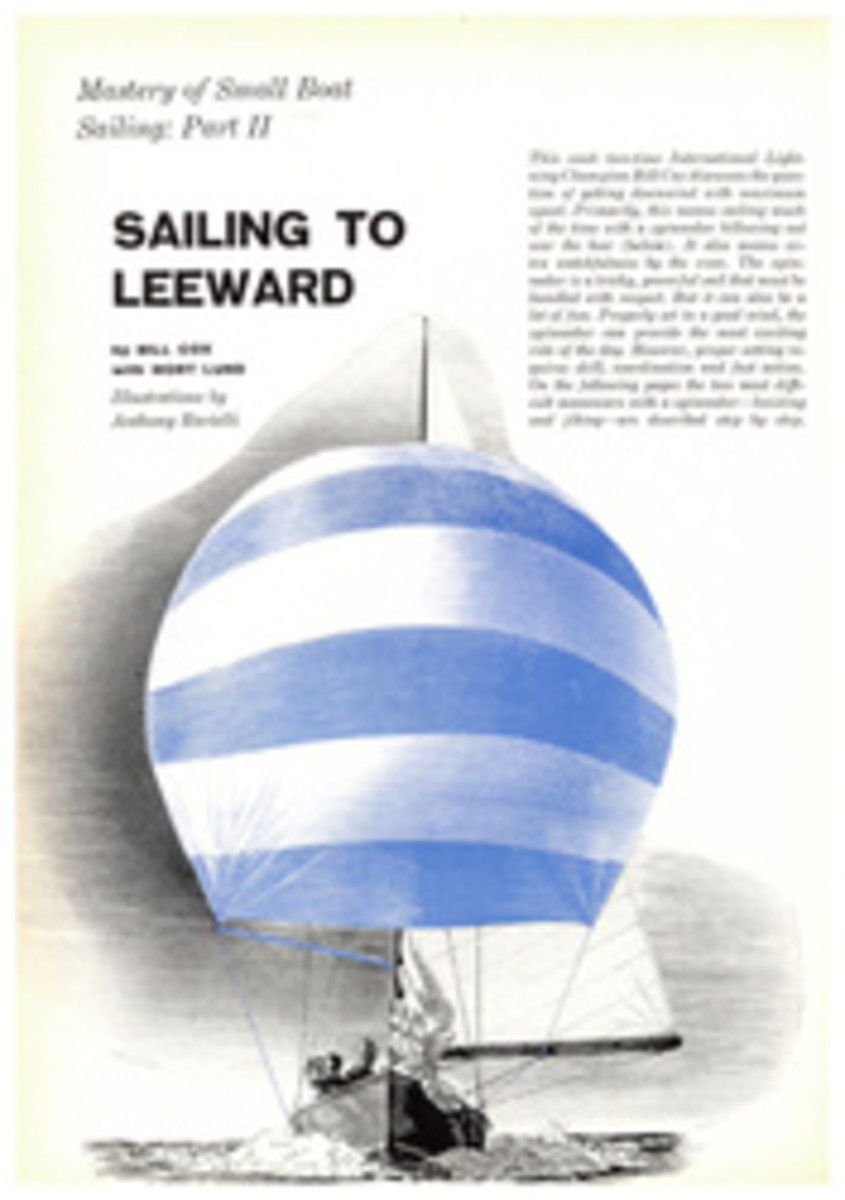
The magic fruit
This is the time of year—between January and the end of March—when the California orange crop is being harvested. Whenever I think of oranges I think of California and of my grandfather's place in the lush land-beyond-the-mountains.
We lived on the desert side of the Sierra Madre when I was a child, but paid occasional visits to my mother's parents in the San Bernardino Valley. Grandfather's great white house, La Casada, which dominated a height in the valley, was thickly set about with a magnificently flourishing orchard of orange trees. Through the groves there descended, terrace upon terrace, a jungly garden as miraculous in the eyes of my two sisters and me as any in a Persian fairy tale. Each terrace backed with Italian cypresses, acacia, palms and camphor trees, each cool expanse of grass bordered with primroses was full of the sound of running water. The fountains and pools and irrigating channels, where water lilies grew and frogs croaked delightedly in the dripping wet, made it all seem Paradise itself. For we were little desert rats, and water to us was the most precious of all elements.
I remember winter as the most crystalline of seasons below the Tehatchepi, when the pepper trees hung heavy with panicles of pink berries and the still air was full of little wisps of smoke from fires of eucalyptus leaves by day and lighted smudge pots in the groves at night—for there always seemed to be the danger of a freeze just as the main crop of navel oranges ripened.
I shall never forget the fun of exploring the groves, of walking the wooden irrigating flumes through the rows of strong-leaved trees, where wild purple hyacinths sprang up, so surprisingly, after a night's rain. There were many kinds of oranges to eat: tangerines, kumquats, blood oranges. The best were from a solitary King-orange tree, the fruit of which we as children were not supposed to touch, as it was reserved for the table. But of course we knew that the right way to eat an orange of any sort was to pick it yourself from your favorite tree, right there in the grove, when no grownups were looking.
That's why it has always seemed to me that the best orange desserts are those that, unlike orange soufflé, orange ice and orange jelly, exalt both the fresh orange taste and the wonderful texture of the magic fruit. Described here are two orange compotes, discovered on later travels, that have this quality in full.
ORANGES À L'ORIENTALE (serves ten)
This dessert, which is shown in the photograph on the opposite page, is easy to make and very fresh-tasting.
Shave the orange-colored outer peel (without the white underskin) off 8 good navel oranges with a sharp, small knife. Cut three-quarters of this "zest" (that is, the peel from 6 oranges) into julienne strips such as are found in marmalade.
Make a syrup of 3 cups of water and 3 cups of sugar, boiling it to the "soft-ball" stage (the point at which a little syrup, dropped into cold water, forms a soft ball—235° on a candy thermometer). Throw in orange peel strips; cook for a few minutes or until they become shiny and somewhat transparent. Then remove from heat and drain, reserving syrup as well as strips.
Meanwhile, cut all the white underskin off the 8 oranges and core them. Halve the oranges crosswise and place them cut side up in a hollow dish, nested among the candied peel strips (see picture). Add a small wineglass of Grand Marnier or curaçao to the syrup and pour over the oranges. Chill, and before serving decorate each orange half with candied violets.
GREEK ORANGES (for six)
The preparation of this dish is a somewhat meticulous procedure that takes time, but the result is ambrosial.
Remove orange-colored outer peel from 6 large navel oranges and cut this peel into marmaladelike julienne strips. Throw into a pan of boiling water and continue to boil over the fire for half an hour, changing the water three times (water must be boiling each time a fresh lot is poured over the strips, which have been drained of their last water). Drain and reserve the peel strips when cooked.
Pare off every bit of white outer skin from the oranges, then cut out individual sections, free of skin or stringy parts. Reserve these in a heatproof dish.
Make a syrup by putting 2 cups of sugar in a saucepan with 1½ cups of water and a little red coloring. Boil for 10 minutes. While still boiling, pour the syrup over the orange sections. Let stand for 15 minutes; then drain, reserving both syrup and orange sections. Boil syrup again for 15 minutes and remove from heat.
Place orange sections in glass or other serving dish; cover with the slightly cooled syrup and the julienne of boiled orange peel. Cool, then chill and serve.
PHOTO
LOUISE DAHL-WOLFE

